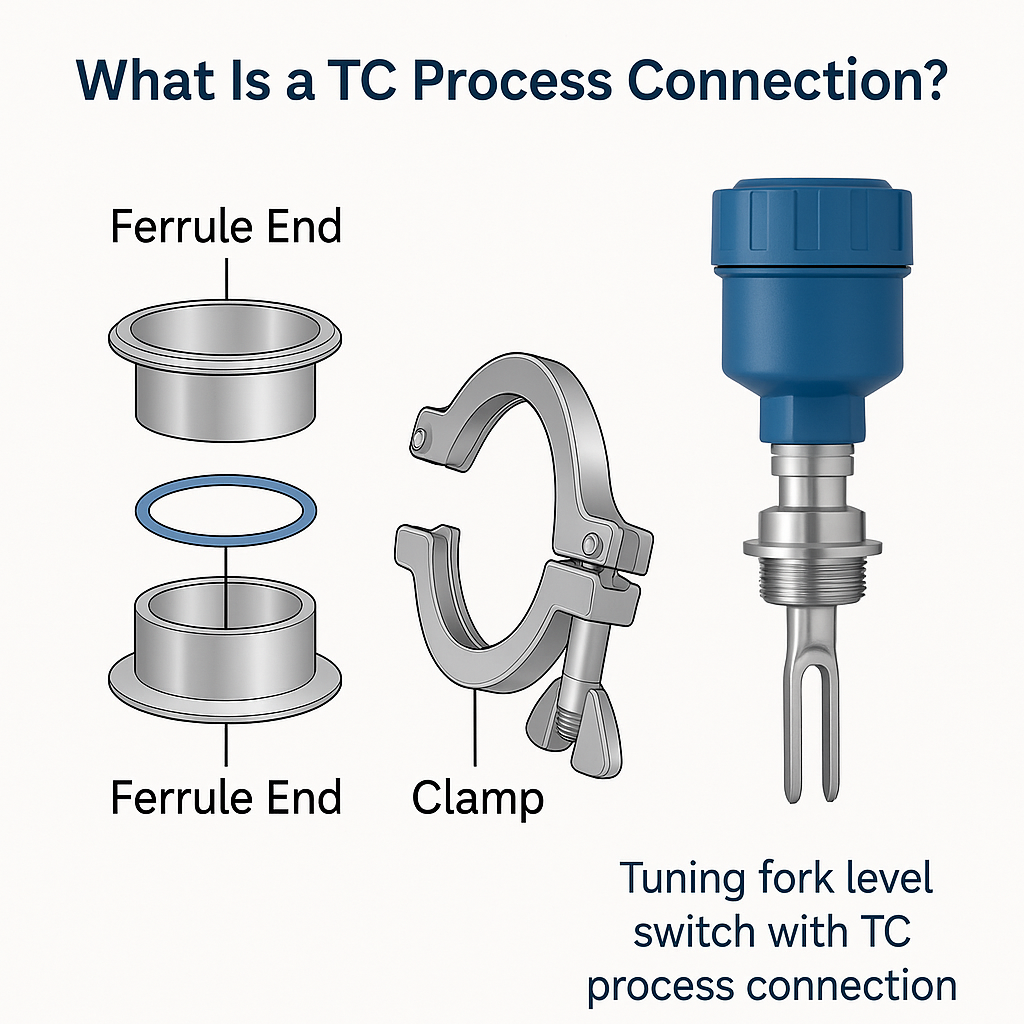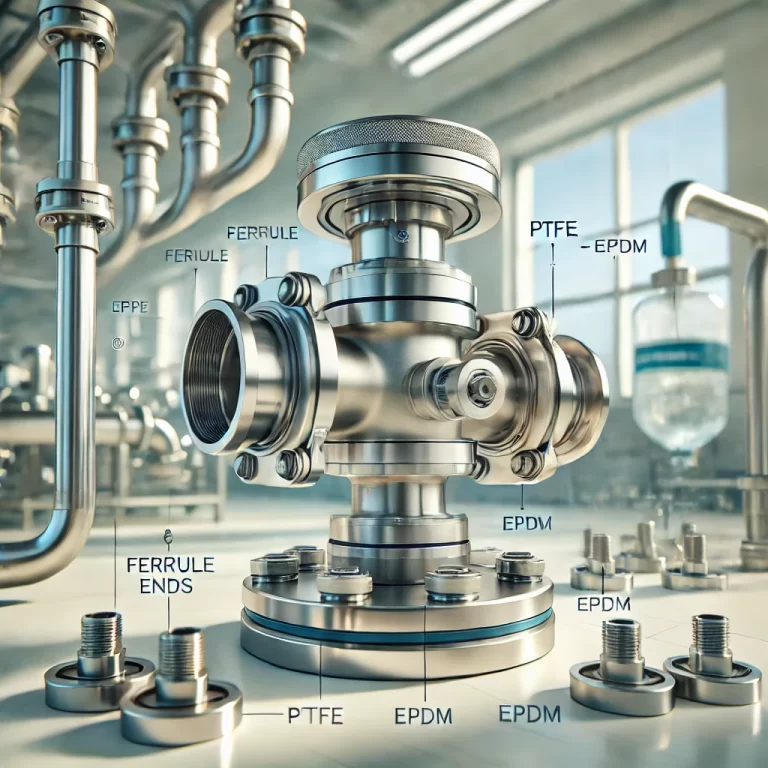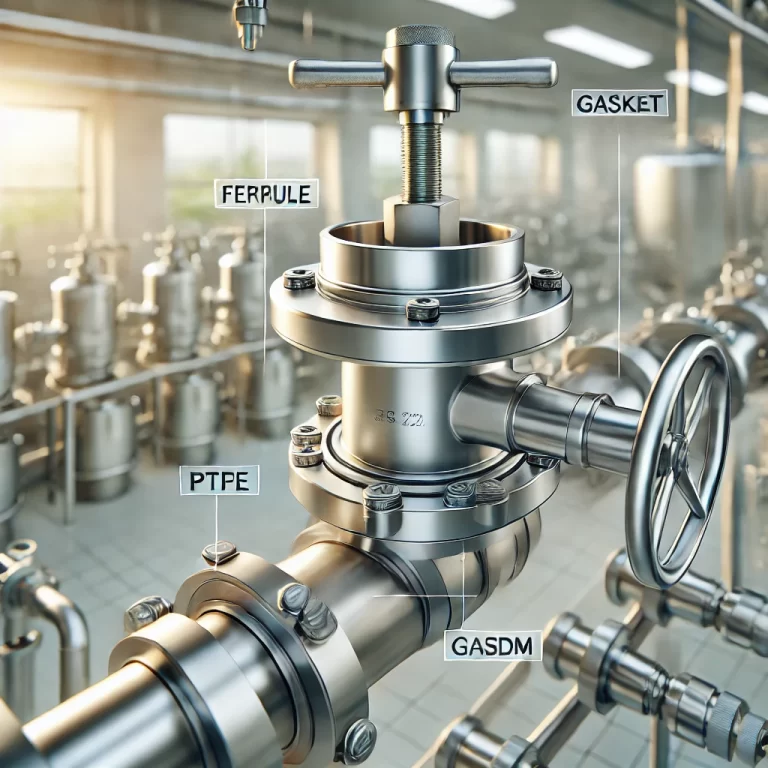In the past, threaded or flanged connections were the standard choice for liquid level instrumentation in most industrial applications. However, when we started working on instrumentation for food industry projects, we noticed that many customers had switched to a different type of interface—the TC connection. Initially, the change was puzzling. But after observing the cleaning and disassembly procedures on a milk processing line, the practical benefits of this quick-connect design became crystal clear.
1. What Is a TC Connection?
The TC connection, often referred to as a Tri-Clamp or tri-clover sanitary connection, is a type of three-piece clamping system widely used in hygienic industries. Its structure is remarkably simple:
Two ferrule ends
One gasket (typically made of PTFE or EPDM)
A clamp to hold everything together
No tools are required—the entire installation or removal process can be done by hand. For example, disassembling a level switch with this setup takes less than a minute, and reinstalling it is just as quick.
Originally developed in the pharmaceutical industry, the TC connection was later adopted by food manufacturers due to its hygiene-friendly and maintenance-efficient design.

2. Why the Food and Pharmaceutical Industries Prefer TC Connections
Industries such as dairy, beverage, pharmaceutical, and biotechnology have stringent requirements for hygiene and cleanliness. The inner surfaces of pipes and instrumentation must be easy to clean and resistant to microbial contamination.
Many production lines use CIP (Clean-in-Place) and sometimes SIP (Steam-in-Place) procedures between batches or shifts. Under these conditions:
Threaded connections tend to create crevices and “dead zones” where product residues can remain trapped.
Tri-Clamp connections, on the other hand, provide a smooth interior profile with minimal risk of product buildup.
From a maintenance perspective, the benefits are just as clear. In one case, a customer needed to replace a failed transmitter. A flanged installation would have taken over 20 minutes—including depressurization and electrical disconnection. With a TC connection, the technician removed the faulty instrument by loosening one clamp, drastically reducing downtime and improving plant efficiency.
3. What About Sealing Performance?
Some engineers worry that clamp connections might not seal as well as flanges. In our field experience, as long as the proper gasket material is selected, TC connections perform reliably under normal working pressures (typically up to 10 bar / 145 psi).
Common gasket materials:
| Material | Features | Suitable for |
|---|---|---|
| EPDM | Good resistance to heat and CIP chemicals | Food/beverage lines |
| PTFE | Excellent chemical and thermal resistance | Pharmaceutical/Chemical industries |
Unless your application involves frequent pressure surges or mechanical shock, a properly installed TC connection will hold up well over time. For high-risk environments, reinforced clamp designs are also available from several manufacturers.

4. Standardization Brings Efficiency
An increasing number of instrument manufacturers now offer TC connection options for their products, including:
Level transmitters
Pressure sensors
Temperature probes
By standardizing the connection types across an entire production line, engineers can:
Reduce the number of adapters and transition fittings
Streamline the design of CIP/SIP cleaning systems
Minimize potential failure points
Simplify maintenance and spare part inventory
5. Final Thoughts: Is TC Always the Best Choice?
TC connections are not “cutting-edge” in a technological sense—they are a practical, purpose-built solution to improve sanitary performance and service efficiency. For industries where hygiene, frequent cleaning, and quick maintenance are critical, the TC connection offers major advantages.
However, for general-purpose level or pressure measurement in ambient conditions, the extra cost and complexity of TC fittings may not be justified. In such cases, threaded or flanged connections may still be more economical.

Conclusion
There is no one-size-fits-all solution for process connections. The best choice depends on:
Hygiene requirements
Frequency of cleaning or maintenance
Operating pressure and temperature
Safety and downtime considerations
Before defaulting to what others are using, it’s worth analyzing your own process needs. A well-chosen connection interface can reduce risk, lower maintenance costs, and improve operational efficiency across the board.
